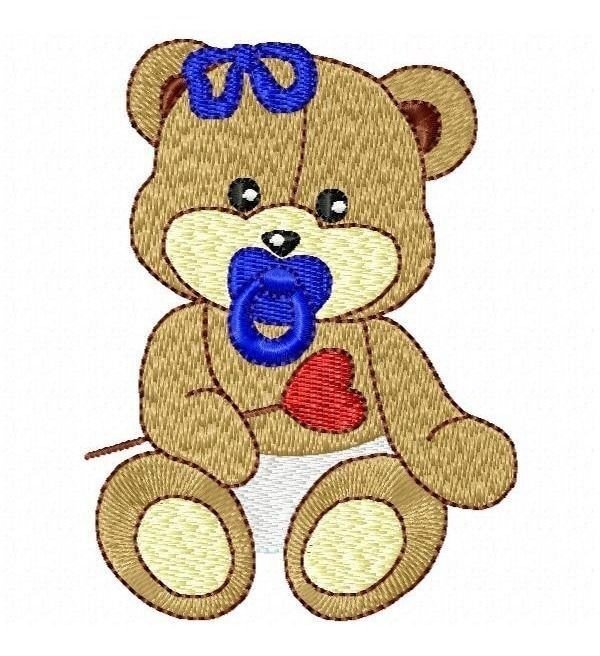The Art of Embroidery Digitizing: Precision and Creativity
Embroidery has long been prominent as a craft that mixes artistry and approach. As era advances, the artwork of embroidery has developed with the advent

Embroidery has long been prominent as a craft that mixes artistry and approach. As era advances, the artwork of embroidery has developed with the advent of embroidery digitizing, a system that uses digital generation to create designs for machine embroidery. Embroidery digitizing combines both precision and creativity, enabling designers to convert complicated paintings into stitchable patterns. This article explores the intricacies of embroidery digitizing, its benefits, the equipment concerned, and the way it blends artistic creativity with technological precision.
What is Embroidery Digitizing?
Embroidery digitizing is the technique of changing artwork, trademarks, or designs right into a virtual format that can be understood by way of embroidery machines. Unlike traditional hand embroidery, which entails stitching by using hand, digitized embroidery lets in for the automation of the stitching procedure. The design is translated into a series of instructions and instructions, dictating the sorts of stitches, their placement, and the colours to be used.
The key to successful embroidery digitizing is the careful stability of technical precision and innovative selection-making. A clothier needs to understand a way to use software tools to manual the embroidery device while additionally preserving the artistic intent at the back of the authentic design.
The Benefits of Embroidery Digitizing
Embroidery digitizing brings numerous benefits to the arena of custom garment manufacturing and personalization. Here are a number of the key advantages:
Increased Efficiency and Speed
Embroidery digitizing lets in for faster and more efficient production of embroidered gadgets. Once a design is digitized, it could be reproduced fast and continuously with minimum human intervention. This is mainly useful in industries like garb manufacturing, in which big volumes of embroidered items are wanted in a quick time-frame.
Consistency and Accuracy
One of the important advantages of embroidery digitizing is the potential to copy designs with high-quality consistency. The digitized design guarantees that each sew, shade, and site is executed exactly, reducing the risk of human mistakes. This is specifically critical for emblems, logo symbols, or tricky designs that require uniformity across multiple items.
Customization and Versatility
Embroidery digitizing offers a high diploma of customization, permitting designers to incorporate complex patterns, logos, and different inventive elements into their work. Whether you're designing for personal use, promotional purposes, or industrial production, embroidery digitizing offers flexibility in developing particular designs tailored for your desires.
Cost-Effectiveness
While the initial cost of embroidery digitizing software program and embroidery machines can be vast, the long-term financial savings can be great. Once a layout is digitized, it can be used again and again with little to no extra price in step with unit, making it a fee-effective answer for mass production.
Key Tools Used in Embroidery Digitizing
Embroidery digitizing entails the use of specialized software and embroidery machines. Understanding this gear is essential for producing fantastic, professional embroidery designs.
Embroidery Digitizing Software
Embroidery digitizing software program is the number one device used to convert paintings into sew files. Some popular embroidery digitizing software program includes:
Wilcom Embroidery Studio: One of the maximums widely used and particularly seemed software programs, Wilcom offers powerful gear for growing difficult designs and automating the digitizing manner.
CorelDRAW with Embroidery Plugin: CorelDRAW is a famous vector image design software program, and its embroidery plugin permits designers to transform vector artwork into embroidery-equipped formats.
TruEmbroidery:
TruEmbroidery is specifically designed for Mac customers and permits the creation of embroidery designs that may be without difficulty transferred to various embroidery machines.
This software program equipment offers diverse capabilities like vehicle-digitizing, manual sewing changes, and precise control over the layout elements.
Embroidery Machines
Once the layout is digitized, it's far transferred to an embroidery machine for stitching. Some main embroidery machines in the market encompass:
Bernina: Known for its great, precision machines, Bernina offers lots of embroidery machines appropriate for both domestic users and industrial purposes.
Brother: Brother’s embroidery machines are popular for his or her person-pleasant interface and flexibility in sewing a huge range of designs.
Janome: Janome offers reliable embroidery machines with sturdy sewing abilities, catering to both novice and superior users.
The embroidery gadget reads the digitized record and stitches the design onto cloth using numerous needle sorts and thread hues.
The Process of Embroidery Digitizing
Embroidery digitizing is each an art and a technology. The method calls for technical knowledge, creativity, and a knowledge of textile behaviour. Here is an overview of the steps involved:
Step 1: Preparing the Artwork
The first step in embroidery digitizing is to prepare the artwork. The picture need to be outstanding and in a layout this is suitable for conversion, along with JPG, PNG, or vector codecs like AI or EPS. Simpler designs are easier to digitize, even as complex pix might also require extra simplification or stylization.
Step 2: Converting Artwork to Stitches
Once the art work is prepared, the clothier uses embroidery software to start the digitizing system. The software program analyzes the picture and assigns sew kinds (e.G., satin stitches, strolling stitches, fill stitches) primarily based on the layout's info. The consumer can manually regulate the sew kinds, path, and density to make certain most reliable sewing effects.
Step 3: Assigning Thread Colors
Next, thread shades are assigned to special sections of the layout. Most embroidery software program includes a thread shade palette that corresponds to the enterprise-general thread manufacturers like Madeira or Sulky. The designer have to pick out colours that closely healthy the original layout even as considering how the threads will look on the chosen cloth.
Step 4: Optimizing the Design
After the basic sewing and shade assignments are made, the layout should be optimized for the embroidery machine. This includes adjusting sew period, width, and density to make certain smooth sewing without puckering or thread breakage. The layout may additionally want to be resized or repositioned to healthy within the hoop place.
Step 5: Testing the Design
Before mass production starts off evolved, a take a look at embroidery is normally carried out on a scrap piece of cloth to ensure the layout interprets well onto the cloth. Adjustments are made as necessary primarily based on the take a look at consequences, which includes fixing any misaligned stitches or converting thread anxiety.
Step 6: Finalizing and Exporting the Design
Once the take a look at layout is accepted, the final embroidery report is saved and exported in a format that is well matched with the embroidery system, along with. DST, .PES, or .EXP. The layout is now geared up for production.
The Role of Creativity in Embroidery Digitizing
While embroidery digitizing is based closely on precision, creativity performs a essential role in ensuring the layout stays visually appealing. A successful layout needs to not simplest be technically correct but also carry the supposed aesthetic or message.
Designers must recollect various factors including:
Fabric Type: Different fabrics react differently to diverse stitches. For instance, lightweight fabrics might also require sensitive stitches, at the same time as thicker fabric may want greater dense sewing.
Stitch Patterns: The kind and direction of stitches make contributions to the texture and usual appearance of the design. Satin stitches, for example, can create a easy finish, whilst running stitches provide a greater subtle, delicate impact.
Balance and Proportion: A properly-balanced design guarantees that the embroidery appears cohesive. Elements like length, spacing, and alignment should be considered at some point of the digitizing system.
Conclusion
Embroidery digitizing is a talent that requires both technical precision and creative aptitude. The mixture of superior software program gear, modern embroidery machines, and a eager eye for layout permits artists and architects to convert thoughts into lovely, purposeful embroidered portions. Whether it’s for non-public garments, promotional objects, or huge-scale business manufacturing, embroidery digitizing opens up an international of possibilities for custom design. As the artwork of digitizing maintains to evolve, designers could have even extra possibilities to push the boundaries of what’s feasible, mixing era with artistry in interesting new methods.
What's Your Reaction?



















